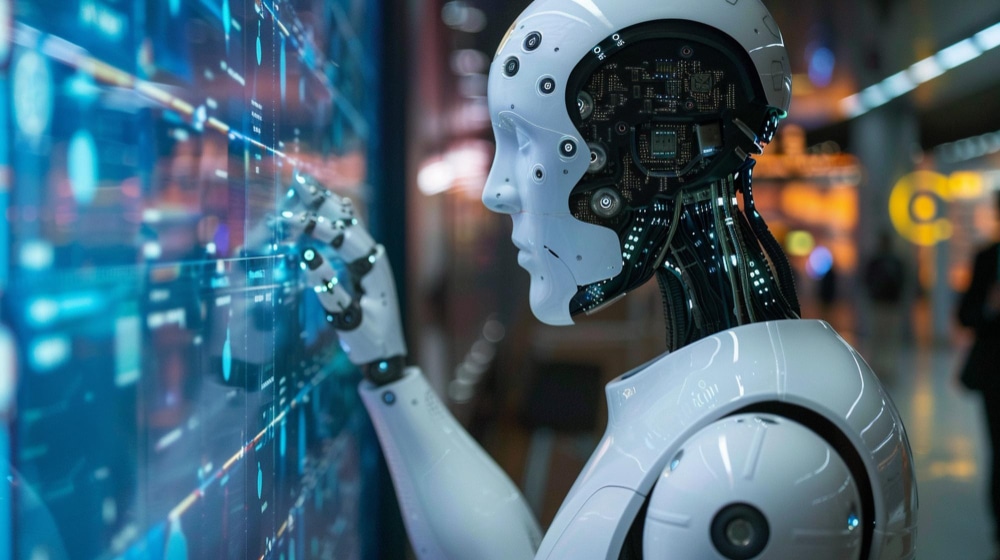In an increasingly digital and globalized business environment, cyber threats multiply and evolve at unprecedented speed. Attacks on information systems, data theft, corporate espionage and operational disruption are just some of the ways in which companies can be vulnerable. In the face of this growing complexity, traditional IT security solutions are proving insufficient. This is where the convergence between cyber intelligence and artificial intelligence (AI) emerges as a powerful tool to transform enterprise security and effectively mitigate threats.
The cyberintelligence and AI fusion not only enables greater ability to detect and respond to attacks in real time, but also provides predictive insight that helps anticipate and prevent risks before they become critical incidents. This integration, in addition to automating key processes, gives companies a significant advantage in protecting their digital assets proactively and strategically.
The power of cyberintelligence in enterprise security

Cyber intelligence has evolved to become a fundamental pillar in cybersecurity strategies. It is based on the collection and analysis of large volumes of data in order to identify unusual patterns and behaviors that may signal an imminent attack. Cyber intelligence is the ability to foresee an attacker's movements and enables companies to make informed, data-driven decisions to safeguard their most valuable systems and data.
This approach focuses on detecting external and internal threats by gathering information from a variety of sources, from forums and clandestine networks, to encrypted communications and corporate networks. In addition, attack techniques, system vulnerabilities and cybercrime trends are analyzed. All this makes it possible to generate intelligence usable, which translates into a greater ability to prevent and respond to cyber threats.
Artificial intelligence: the strategic ally in cybersecurity

Artificial intelligence has revolutionized many aspects of the business world, and cybersecurity is no exception. Using machine learning algorithms, AI is capable of analyzing huge amounts of data in real time, identifying behavioral patterns and generating automated responses to threats. AI is key to managing large volumes of data efficiently and providing rapid solutions to complex problems.
One of the most valuable applications of artificial intelligence in cybersecurity is anomaly detection. These algorithms make it possible to detect unusual behavior within systems and networks, which may be indicative of a cyber attack in progress or in the planning stages. Unlike traditional systems that rely on known malware signatures, AI systems continuously learn from new data and adapt to emerging threats, improving over time.
Automating incident response is also one of the great benefits that AI offers in this area. Rather than relying solely on human intervention to respond to each threat, AI-powered systems can react in real time, containing and mitigating attacks before they cause significant damage. This is particularly important in a context where the volume and sophistication of cyberattacks is ever increasing.
▶ You may be interested in: Importance of cyberintelligence in enterprise security
The future of enterprise security: cyberintelligence and artificial intelligence in tandem
The real value arises when cyber intelligence is combined with artificial intelligence. This integrated approach enables deeper and more detailed analysis of threats, while improving the speed and accuracy with which incidents can be responded to. This synergy is particularly effective in an environment where cyber attacks are becoming increasingly sophisticated and difficult to predict using traditional methods.
The fusion of these technologies offers organizations a holistic view of their security landscape. On the one hand, cyber intelligence provides the context needed to understand the source and nature of threats, while artificial intelligence enables immediate and accurate action to neutralize them. This holistic approach reduces the risk of successful attacks and significantly improves a company's ability to defend against cybercriminals and hacktivists.
Discover the future of corporate security with ENIGMIA! We combine cyber intelligence and artificial intelligence to offer you advanced protection and smarter decisions. Secure your business against emerging threats.Contact us at and take your safety to the next level!
A clear example of this combination is the use of artificial intelligence to process large amounts of data from cyber intelligence networks. This data, which includes threat reports, network traffic, access attempts and other indicators, can be automatically analyzed by AI to detect patterns that would be invisible to humans. In this way, companies can detect emerging threats long before traditional systems identify them.
In addition, AI applied to cyber intelligence enables a predictive approach. This means that, instead of waiting for an attack to occur, companies can anticipate attackers' moves and strengthen their defenses before the damage is irreversible. This type of approach is essential in a context where attackers are constantly looking for new ways to infiltrate corporate systems.
Challenges and opportunities of this technological merger
Despite the great advances offered by the fusion of cyberintelligence and artificial intelligence, its implementation is not without its challenges. One of the main obstacles is data quality. AI systems depend on accurate and up-to-date data to function properly. If threat information is erroneous or incomplete, algorithms can generate false positives or, worse, fail to detect a real threat. Therefore, ensuring data quality and continuous updating is essential for effective integration.
Another challenge lies in the integration of these technologies with existing enterprise security infrastructures. Many organizations have security systems that have been operating for years, and the transition to AI and cyber intelligence-based models can be complex. However, the long-term benefits of this integration far outweigh the initial drawbacks. Companies that succeed in implementing these technologies will be better positioned to meet the security challenges of the future.
In terms of opportunities, the fusion of cyber intelligence and AI not only improves threat responsiveness, but also optimizes resources. By automating many of the monitoring and analysis tasks, companies can reduce the workload of their security teams, allowing them to focus on more important strategic aspects. In addition, AI enables scalability that would be impossible to achieve through manual or traditional approaches.
Conclusion
The combination of cyberintelligence and artificial intelligence is revolutionizing the way enterprises approach digital security. This integrated approach not only improves the ability to detect and respond to cyberattacks, but also offers a competitive advantage by providing a deeper and more predictive view of the threat landscape. As cyber threats continue to evolve, companies that adopt this fusion will be better equipped to protect their data, infrastructure and operations.
The future of enterprise security is undoubtedly tied to this symbiosis between cyber intelligence and AI, and those organizations that invest in this technology will be at the forefront of protecting against the growing number of cyber threats.




